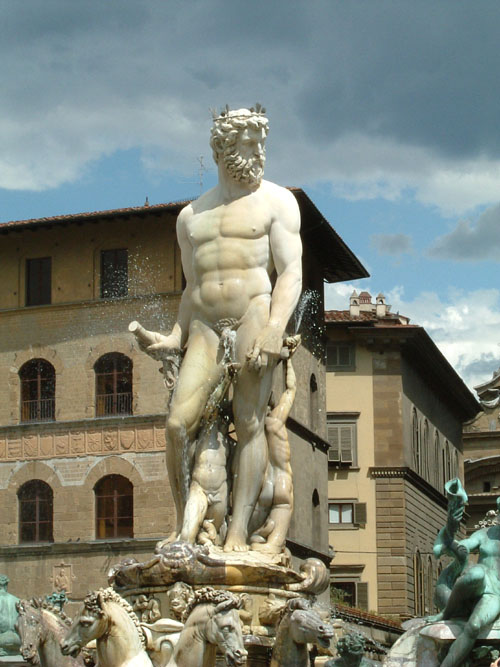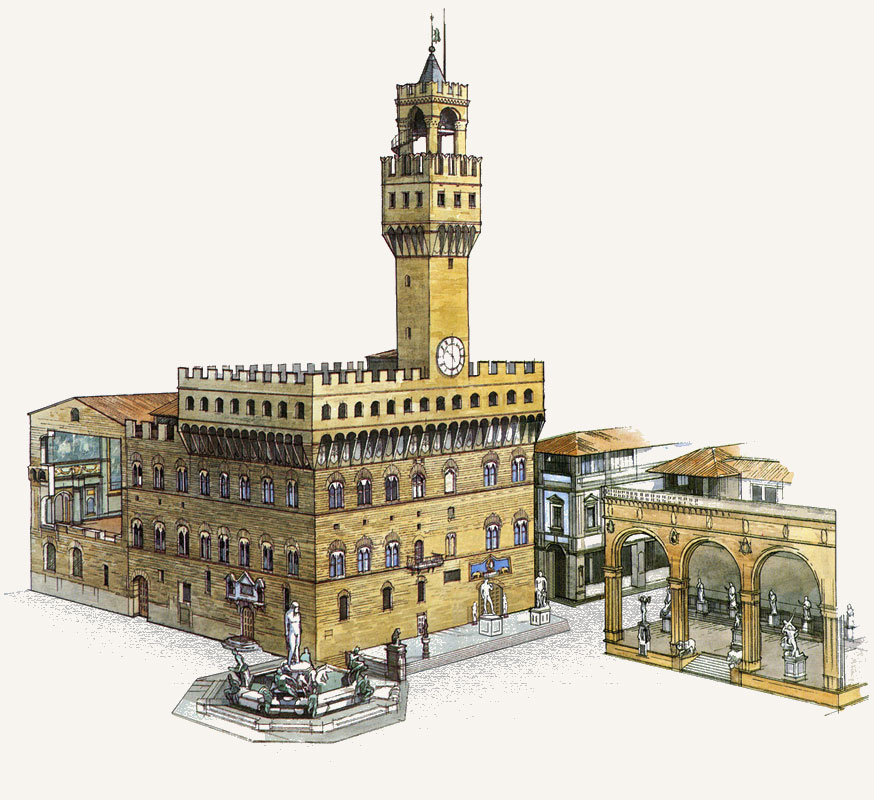Quadrangular Facade–“The Palazzo Vecchio resembles a giant chess piece. With its robust quadrangular facade and rusticated square cut battlements…” Inferno, chapter 34. Robert Langdon and Sienna Brooks visit the Palazzo Vecchio.
Piazza della Signoria— The Piazza della Signoria is the square in front of the Palazzo Vecchio in Florence. Typically, one must pass through the Piazza della Signoria to reach the Palazzo Vecchio; however, Langdon and Brooks skirt the Piazza by using the Vasari Corridor.

Neptune
Ammanati’s Neptune- This is a fountain in the Piazza della Signoria in Florence. Bartolomeo Ammannati sculpted the fountain in the early 1560’s.
Michaelangelo’s David— The statue of David sculpted by the Italian Renaissance sculptor Michelangelo is one of the most famous sculptures in the world. In 1873, the original David was moved to a gallery and replaced by a replica in the Piazza della Signoria. The one that Langdon and Brooks see in Inferno is the replica.

Hercules and Cacus
Hercules and Cacus— This is another of the scultures of nude males adorning the Piazza della Signoria. Hercules and Cacus was sculpted by Baccio Bandinelli from 1525-1534.
Satyrs— In Greek and Roman mythology, Satyrs are men with goat characteristics. They were the companions to Pan and Dionysus.

The Medici Lions
Medici Lions— The Medici Lions are a pair of famous marble sculptures that are located in the Loggia dei Lanzi, a sculpture gallery, in Florence. In Inferno, Robert Langdon references the Medici Lions with regard to his previous trips to Florence; he and Sienna do not encounter the Medici Lions on their adventure.
United States Capitol Building— The architecture and art of United States Capitol Building is greatly influenced by Italian art and architecture. It is referenced in Inferno since it is both a museum and active government building, like the Palazzo Vecchio.
Atrium– An Atrium is a large open space. In Inferno, Langdon spots the atrium off of which the Hall of Five Hundred is Located after they emerge from the Vasari Corridor.
